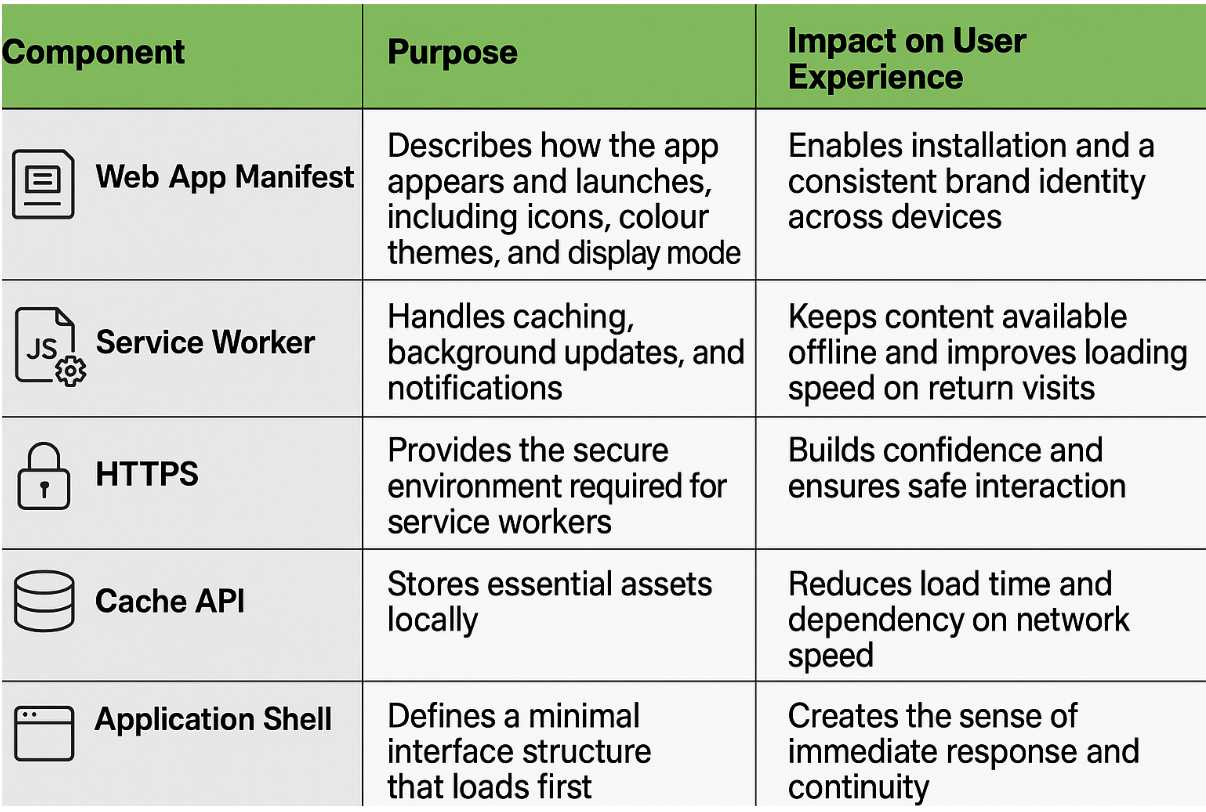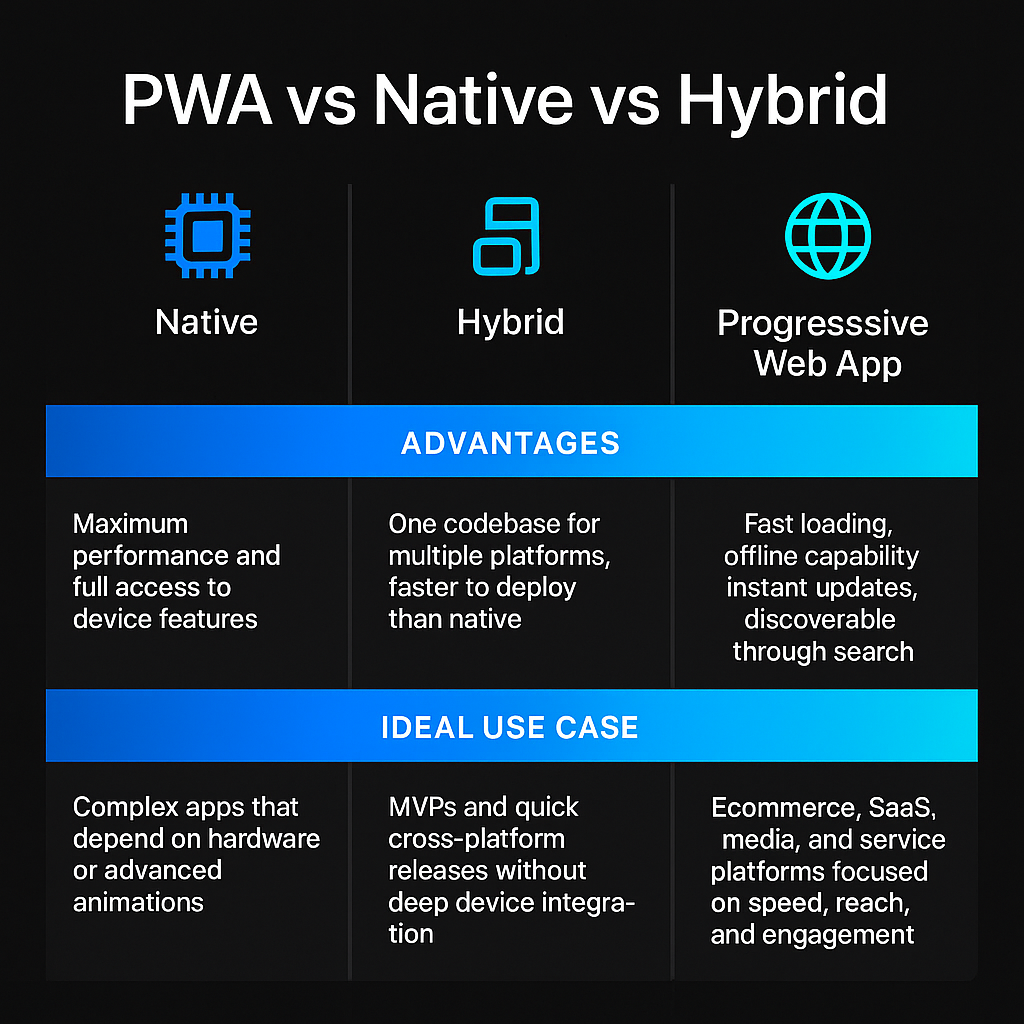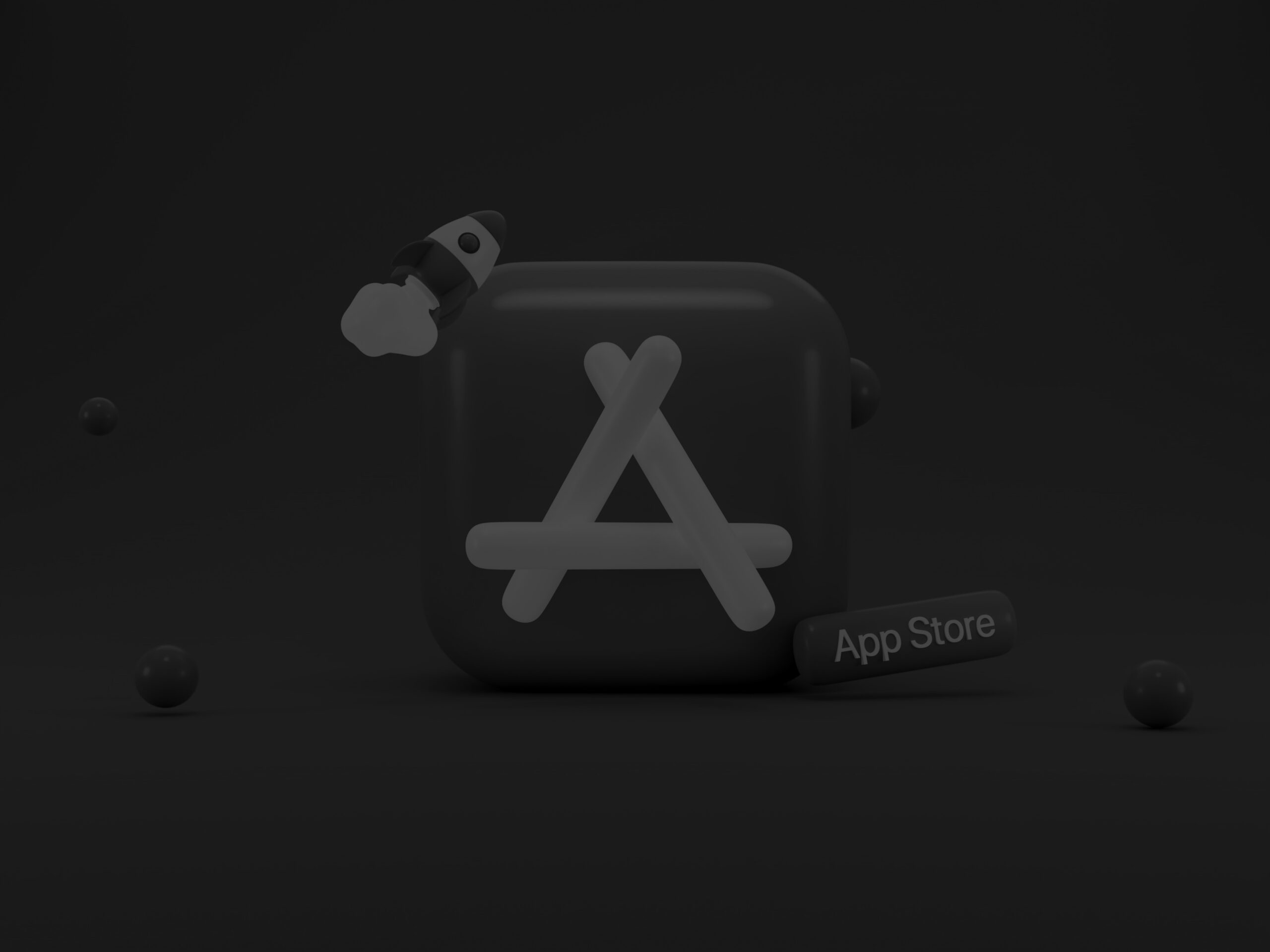Every few years, web development experiences a turning point, and the current one is defined by how people expect the web to behave. When they open a browser, they assume it will respond like an app: instant, smooth, and personal. Yet most digital teams still struggle to meet that expectation without multiplying effort across separate web and mobile builds.
This gap between what users want and how brands deliver it is exactly where Progressive Web Apps prove their value. They combine the openness of the web with the polish of native experiences, giving businesses one adaptable platform to reach audiences everywhere. These are applications built with standard web technologies that run seamlessly on any device from a single codebase. In practice, this means an experience that installs, updates, and performs like an app but remains discoverable through a link.
This guide explores what building a Progressive Web App actually involves, from understanding its structure and performance principles to comparing it with native and hybrid options. It outlines the development workflow, the technologies behind seamless offline behaviour, and the business logic that makes PWAs a practical path toward faster, scalable, and more engaging digital products.
What a Progressive Web App Really Is
A Progressive Web App starts as a website and becomes something more through a set of browser capabilities. It can be installed on a home screen, send notifications, and function when the network drops. Yet under the surface, it still relies on HTML, CSS, and JavaScript, the same foundation that powers the open web.
Mozilla’s MDN Web Docs defines a PWA as a web application that leverages progressive enhancement to deliver a user experience comparable to native software. The strength of this model comes from a few core components that work together to create reliability, speed, and consistency.

Each element contributes to how users perceive speed and stability. When a service worker intercepts requests and loads data from cache, the interface responds without visible lag. When a manifest defines consistent icons and colours, the experience feels cohesive across screens. Together, these small details close the gap between browsing and using an app.
For developers, the advantage lies in simplicity. One codebase adapts across browsers and operating systems, keeping maintenance predictable and rollouts faster. For businesses, that translates into measurable performance gains and reduced cost of ownership. This is where LenGreo acts as a strategic partner, helping companies translate technical efficiency into growth through well-planned, scalable PWA architecture.
A Progressive Web App represents a mindset more than a format. It treats accessibility, reliability, and engagement as parts of the same objective: creating a digital experience that meets modern expectations while staying efficient to build and maintain.
PWA vs Native vs Hybrid: Choosing the Right Model
Choosing how to build a digital product always begins with one question: how it will serve users most effectively. Every approach – Progressive Web App, native application, or hybrid framework – comes with its own balance of performance, reach, and cost. Understanding those differences helps determine which path leads to the best outcome.
A native app is written specifically for a single operating system. It delivers full access to device features such as camera, sensors, and push notifications, and usually performs at the highest speed. The trade-off is effort. Separate development for iOS and Android means double the time, testing, and maintenance. Updates take longer, and releases depend on app-store approval cycles.
A hybrid app sits between native and web. It wraps a web interface inside a native shell, allowing one codebase to run on multiple platforms. While this reduces development time, the experience can feel inconsistent. Performance often depends on how efficiently the wrapper integrates with device hardware, which varies by platform.
A Progressive Web App brings another approach. It runs directly in the browser yet feels like a native product. There is no app-store friction, no separate release pipeline, and updates reach every user instantly. The same code serves desktop and mobile, adjusting automatically to screen size and operating system. Installation happens through the browser, and users can return to it like they would with any other app on their home screen.

For many companies, a PWA acts as a bridge. It allows them to test product ideas, expand into new markets, or modernize outdated mobile experiences before committing to a full native build. This flexibility makes PWAs a practical starting point for digital strategies that prioritize scalability and performance without overextending development resources.
Key Advantages of PWA Development
When companies choose to invest in a Progressive Web App, their reasons often start with performance but rarely end there. The real value comes from how multiple factors – speed, engagement, cost efficiency, and discoverability – work together to improve both the user experience and business outcomes.
Speed and Performance
A PWA loads faster because most of its elements are stored locally through caching. Only the necessary data is fetched from the server, which reduces load times even on unstable networks. Users see the interface almost instantly, and this perceived speed significantly lowers bounce rates. The same structure also improves metrics tied to Google’s Core Web Vitals, which directly influences visibility in search results.
Offline Capability and Reliability
Service workers allow PWAs to function when the internet connection fails. Content, layout, and essential interactions remain available until the network returns. This resilience helps businesses maintain engagement in markets with inconsistent connectivity and gives users a sense of reliability they associate with installed apps.
Seamless Updates
A traditional mobile app depends on user action to update. A PWA refreshes itself automatically in the background, meaning every visitor always experiences the latest version. It removes friction for both users and development teams, keeping releases continuous and maintenance centralized.
Engagement and Retention
PWAs can send notifications, appear on the home screen, and work full-screen without browser UI. These small but meaningful features create a stronger sense of presence, which translates to repeat visits and better session times. The combination of push notifications and instant access makes PWAs a competitive alternative to native apps for user retention strategies.
SEO and Discoverability
Unlike native apps, which rely on app stores, PWAs are indexed like websites. This gives them a clear advantage in organic discovery and AI-powered recommendation systems. Each screen can be linked, shared, and crawled, which extends their visibility across search results and conversational AI platforms that surface web-based data.
Cost Efficiency
A single PWA replaces the need for separate web, iOS, and Android versions. The savings come not only from development but from ongoing maintenance and marketing integration. Businesses maintain one analytics pipeline, one release schedule, and one SEO strategy. Over time, this simplicity compounds into tangible cost reductions.
When these advantages align, the effect goes beyond technical improvement. A well-structured PWA strengthens a company’s digital presence by making every interaction faster, more stable, and easier to scale – qualities that define long-term competitiveness in the web economy.
Development Process: How a PWA Comes to Life
Building a Progressive Web App follows the same foundation as modern web development but focuses more sharply on speed, reliability, and adaptability. The process unfolds in several connected stages.
- Defining the purpose
Every project begins with intent. A PWA must have a clear goal—whether it replaces a native app, upgrades an existing website, or introduces a more accessible experience for new users. Purpose sets the boundaries for scope, features, and performance targets.
- Designing for adaptability
Design establishes the flow of the experience. Interfaces scale across screen sizes and input types while staying lightweight and fast. Visual hierarchy, spacing, and simplicity ensure the perception of instant response, which often matters more than raw loading speed.
- Building the core
Development connects design and function. Frameworks such as React, Vue, or Angular provide the base, while the service worker and manifest define what makes the app progressive. The service worker manages caching, background sync, and offline operation – the component that allows a PWA to function without network dependence.
- Testing and optimisation
Each build undergoes tests under realistic conditions, from unstable networks to repeat sessions. Tools like Lighthouse benchmark accessibility, speed, and reliability, helping teams identify and resolve performance gaps early.
- Deployment and evolution
Once deployed through HTTPS, real-time analytics track engagement, load times, and retention. These insights guide incremental updates rather than large overhauls, keeping the PWA continuously optimised.
A strong PWA is never static. It evolves through observation and refinement, adapting to changing devices, expectations, and performance standards.
Business Perspective: When and Why to Invest in a PWA
Building a Progressive Web App is a business decision before it is a technical one. It often starts when a company sees rising mobile traffic but falling engagement from traditional apps. Users want immediacy without installation, and teams need faster, unified ways to deliver updates.
A PWA offers that balance. It extends an existing website into an installable, high-performance experience that loads instantly, works offline, and updates itself in the background. For many brands, it becomes the logical next step between maintaining a responsive site and investing in separate native builds.
PWAs also serve as a low-risk environment for testing new products or entering new markets. They can launch quickly, gather real-time analytics, and validate ideas before larger investments are made.
The financial case is equally strong. One codebase supports all devices, reducing development and maintenance costs while keeping performance consistent. Visibility improves as well: because a PWA remains part of the indexed web, it benefits from organic search and AI-driven recommendations that native apps cannot access.
For established organizations, a PWA modernizes outdated systems without full redevelopment. For startups, it provides the most accessible route to market. In both cases, it builds a foundation that adapts to change rather than chasing it. LenGreo helps companies make that transition strategically, ensuring that every PWA supports measurable growth and long-term scalability.
Conclusion
Progressive Web Apps have redefined what it means to build for the web. They blur the line between websites and native applications, giving companies a single, flexible framework that supports both discovery and engagement. What began as an experiment in faster loading has become a core strategy for brands that want to scale efficiently while maintaining full control over user experience.
The strength of a PWA lies in how it balances simplicity and capability. One build can perform across devices, stay reliable offline, and update itself silently in the background. For businesses, this means fewer barriers between idea and execution, and for users, it means faster, smoother access to the products and services they trust.










